1870's Single Shots
The Glory Days of the Big Bore
other By: Mike Venturino Photos by Yvonne Venturino | May, 25
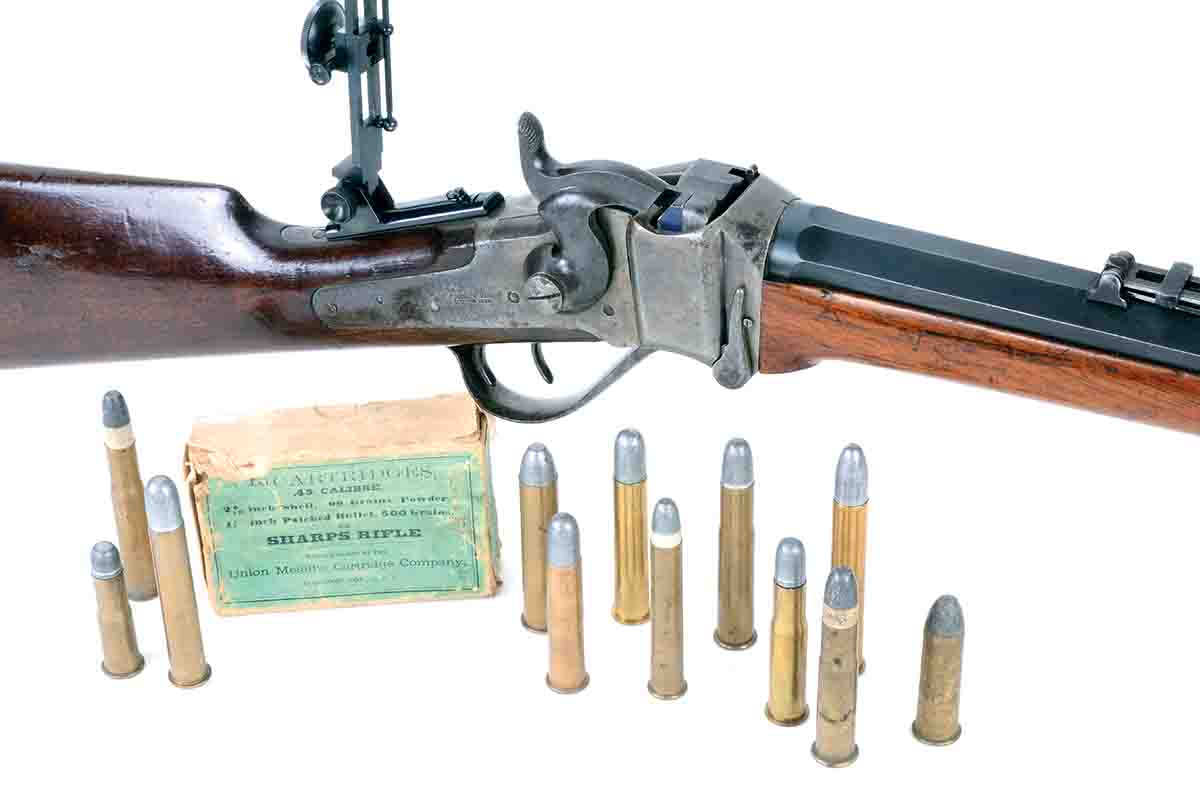
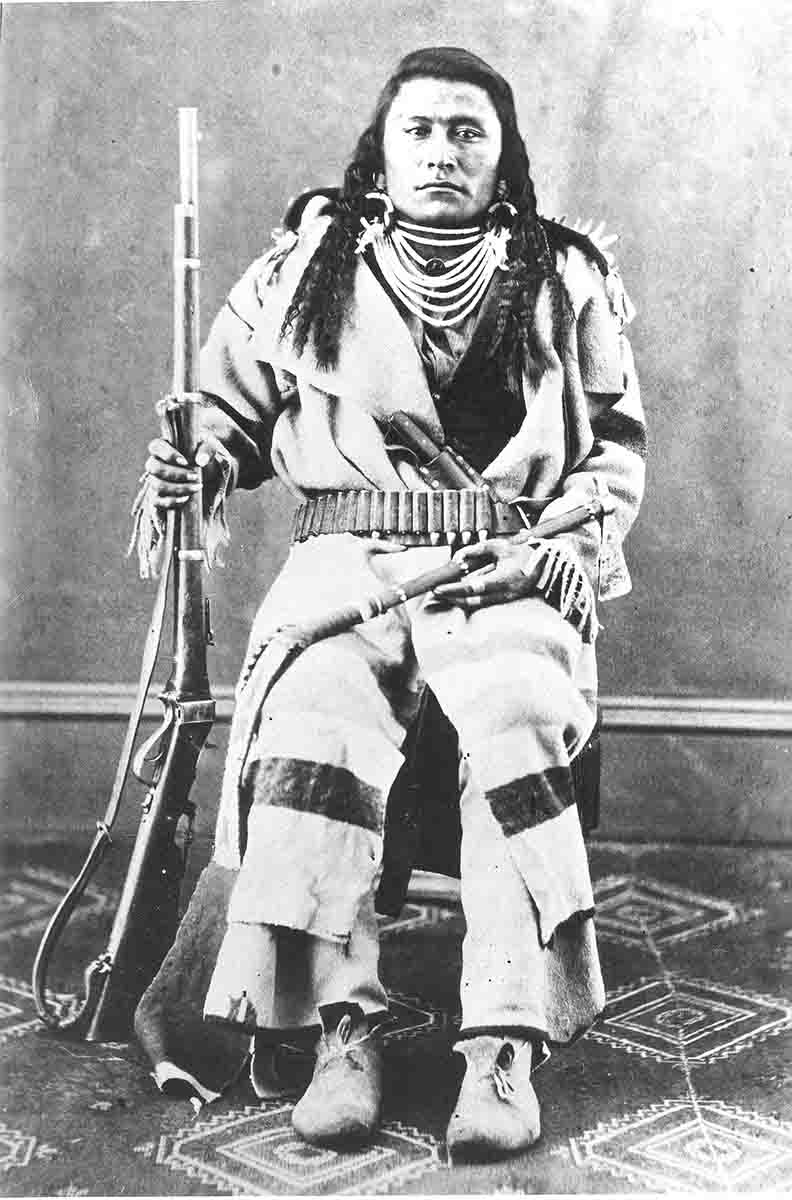
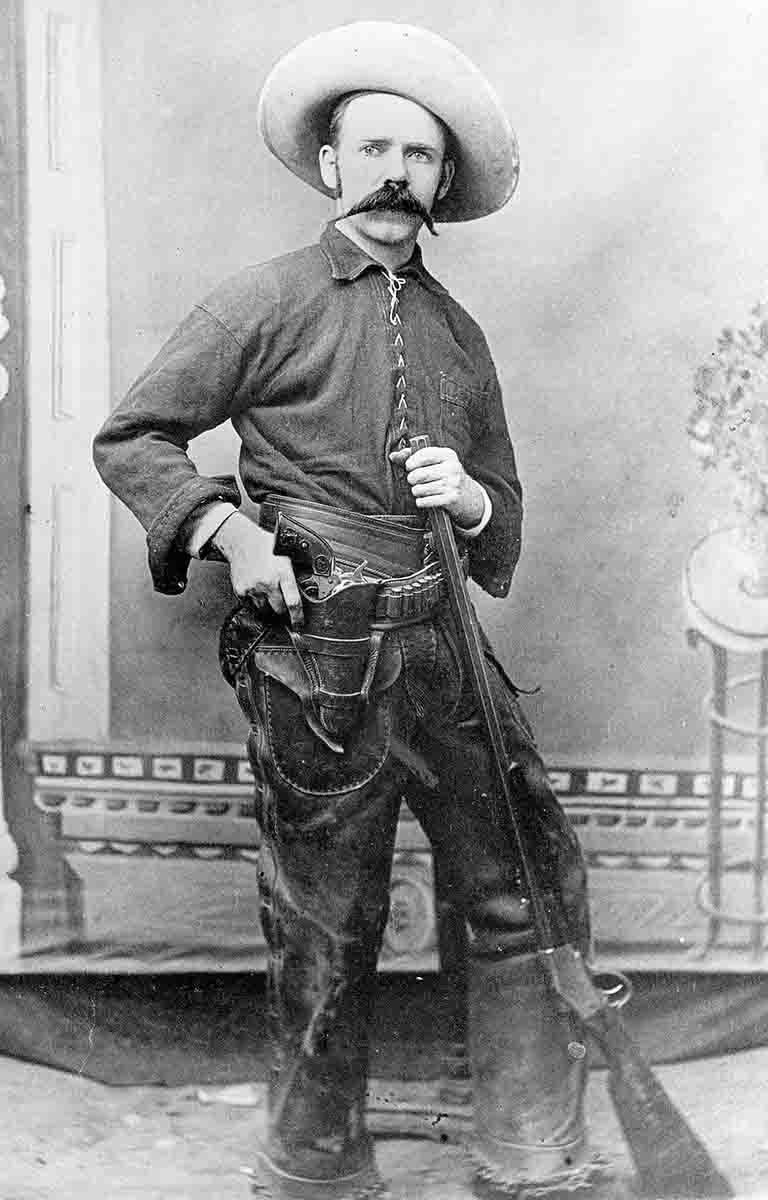
Today we do not laud Indians being confined to reservations nor the near extermination of the bison. Be that as it may, and no matter how those proceedings are viewed, the truth of the matter is that tough men wielding single-shot rifles made it happen. It is also true that those same rifles are so admired now in the twenty-first century that all are being reproduced and used for hunting and competition.
A myriad of single-shot rifles was on the market in the 1870s. Some were made in such meager numbers as to be rarities even among knowledgeable shooters in the twenty-first century, like the Whitney Phoenix and a large assortment of Maynards and Ballards.
Toward the end of the decade, some rifles existed that today are more known by their designers than their manufacturers – Borchardt and Hepburn come instantly to mind.
With all the above understood, there were three single shots in the 1870s that were head and shoulders above the others, both in regard to their use and their historical importance.
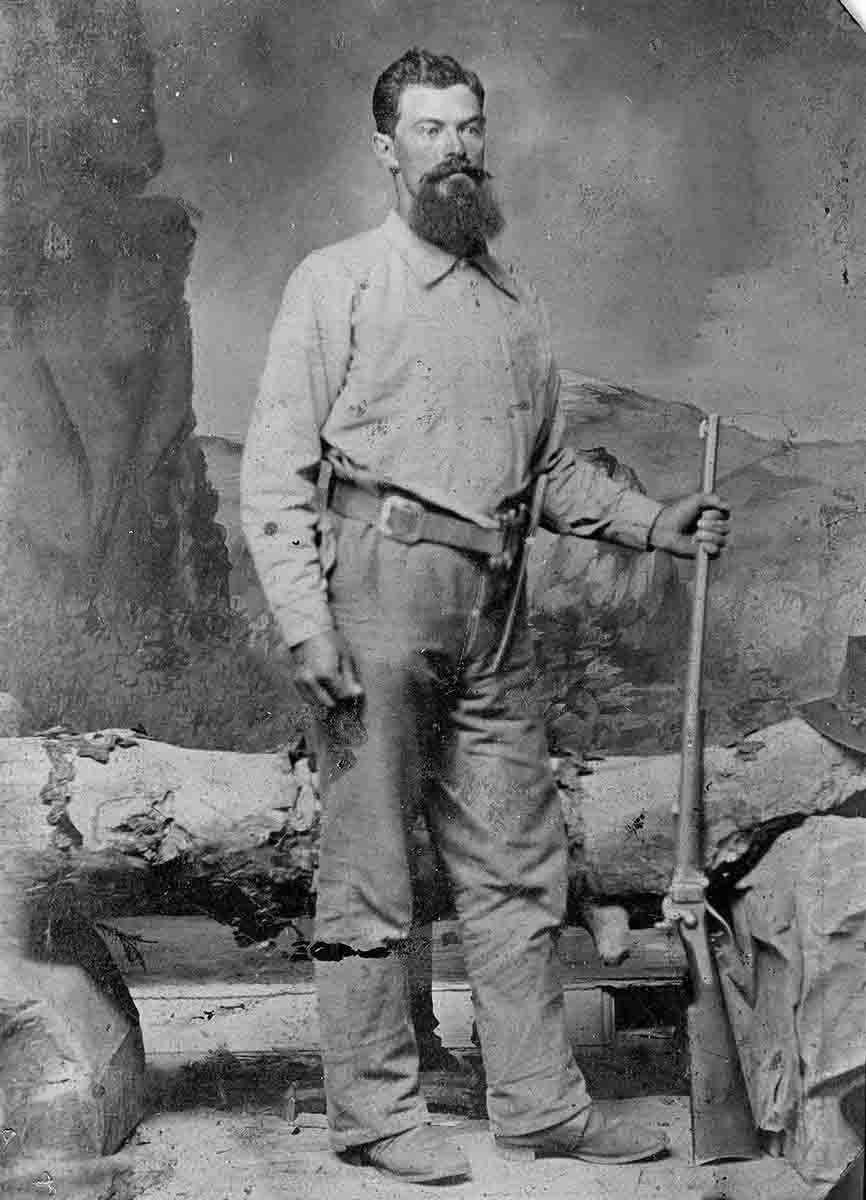
Rifle buyers of the 1870s really didn’t need a model number. They knew that a Sharps rifle was a big-bore single shot of falling block operation. Loading was accomplished by pulling the breechblock down with the trigger guard, exposing the chamber so a metallic cartridge could be inserted. Raising the trigger guard/ lever brought the breechblock up, encompassing the loaded cartridge with steel. Before the loaded rifle could be fired, the large, exposed hammer on the action’s right side had to be manually pulled to full-cock position.
After firing, the trigger guard/lever was lowered, but when it hit the bottom of its free travel, a spring stopped it. Pushing the lever manually against the spring then caused the extractor to pull the spent cartridge case from the chamber. If the lever was worked smartly, it not only extracted the cartridge case but also ejected it clear of the rifle. If worked too smartly, the lever could be bent. Therefore, Sharps shooters needed to be experienced with their rifles in order to be competent with them.
Such shenanigans sound awkward to modern riflemen, but at that date it was one of three basic methods for rifle actions to handle big, powerful cartridges. Of course, mechanical repeaters were on the scene at this time; the Winchester Model 1866 was five years old, but its .44 Henry Rimfire wasn’t even a good revolver cartridge. Today it wouldn’t be legal for deer hunting in many states.
When the new Sharps rifle appeared in 1871, another company had been making big-bore single shots since 1867. E. Remington & Sons had a design for an action with a rolling-block mode of operation on the drawing boards even before the Civil War ended in 1865. Remington’s big single shot was officially named the No. 1, but in firearms vernacular, it has forever been called simply “rolling block.” Its mode of function is completely different than a falling block. A Remington No. 1 has a hardened pin laterally through the receiver and through a breechblock that pivots on it. Behind that pin is another on which a massive hammer rotates.
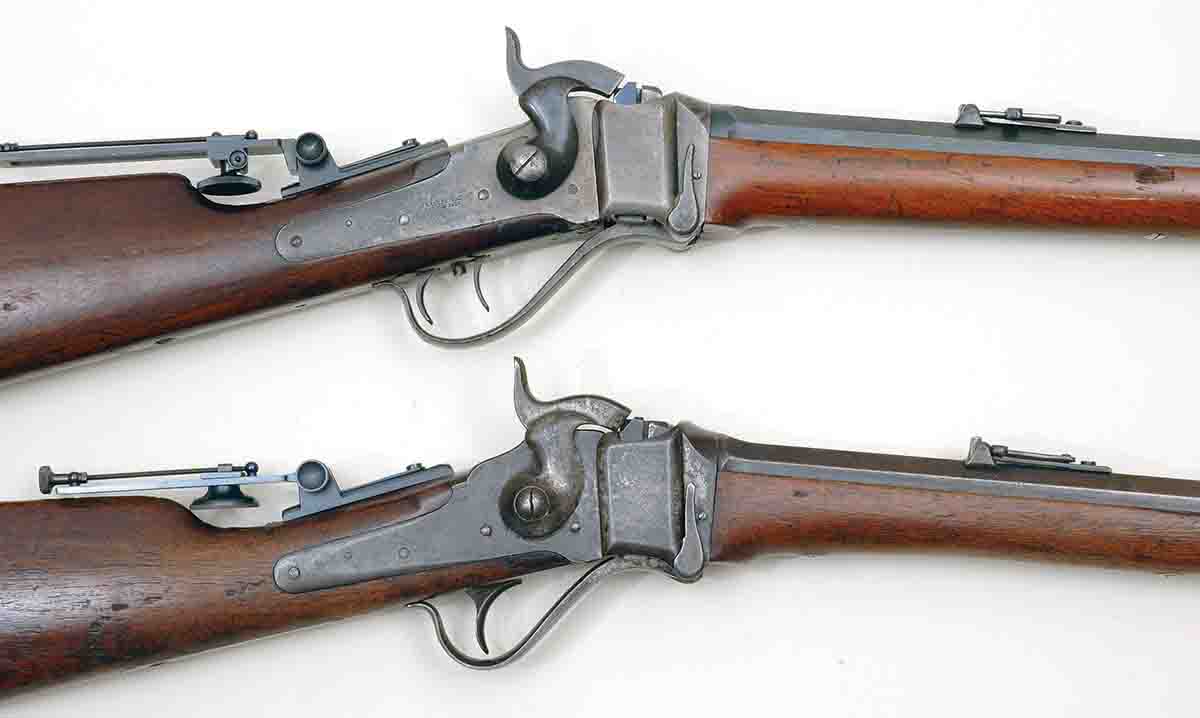
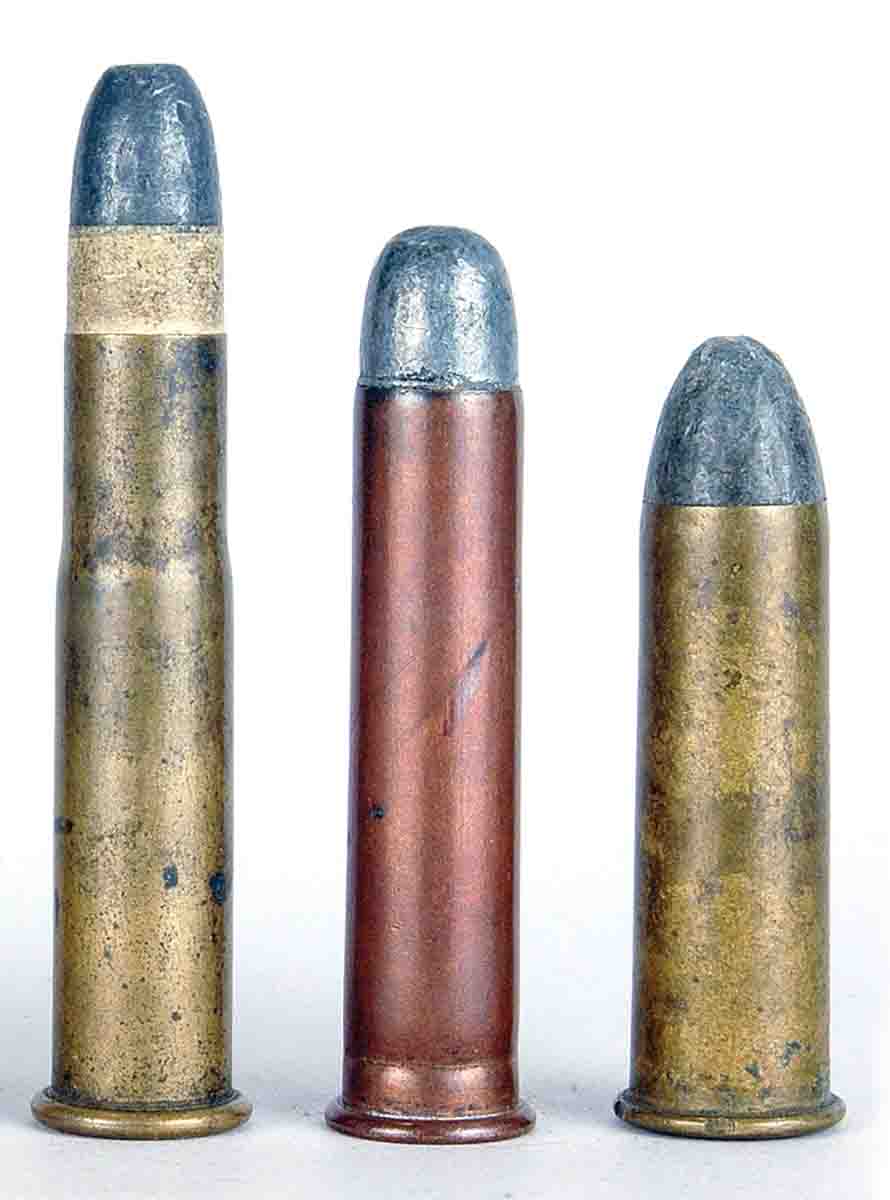
That simplicity is the reason why, for a period of years, Remington’s rolling blocks dominated the military rifle scene, not in the United States but for much of the rest of the world. In the 1870s, many European nations used natives of their colonies for troops. Even the most primitive tribesmen could be taught rolling block manipulation. And be sure, “rest of the world” is not an exaggeration. Armies around the globe and from as far north as Sweden to as far south as Argentina issued rolling blocks to their soldiers. Some nations such as Sweden and Denmark prevailed on Remington to license their manufacture domestically.
In an original Remington catalog dated 1878, the writers bragged that thus far Remington had produced one million rolling blocks. At the height of production, Remington’s Ilion, New York, factory was running 24 hours a day and capable of turning out 1,600 rifles a day. (Source: The Military Rolling Block Rifle by George Layman).
The reason Sharps is still an iconic name to Americans but “rolling block” is not lies precisely with that great military acceptance – except in the United States. The U.S. government did buy and issue some rolling blocks for field testing but never actually adopted the model for general issue. The Remington Company was so involved with producing military rifles that sales to sportsmen were a distant second consideration. Hence, on the American frontier, use of rolling blocks was not as prevalent as with Sharps, which isn’t the same as saying Remington rolling block sporting rifles were absent.
Many frontiersmen still famous today carried rolling blocks on the plains. Buffalo Bill Cody was one, and Lt. Col. George A. Custer carried his favorite .50-70 rolling block sporter to the 7th Cavalry’s infamous debacle on the hills above the Little Bighorn River in 1876.
For every rolling block seen on the western plains in the 1870s, there were probably several Sharps Model 1874s. For every Sharps there were scores if not hundreds of another single shot. It was the Model 1873 in both rifle and carbine form adopted by the U.S. Army in that year and was the launching vehicle for the still popular .45-70. In those days it was known as the .45 Government.
As issued to troops, the Model 1873 .45 came in two basic versions. Infantry rifles had 325⁄8-inch barrels with full-length stocks and weighed about 9 pounds. Cavalry carbines had 22-inch barrels, partial length stocks and weighed 7 pounds. (There actually were some other versions of Model 1873s, such as a shorter Cadet Model, an Officers’ Model and even a very rare Target Model.)
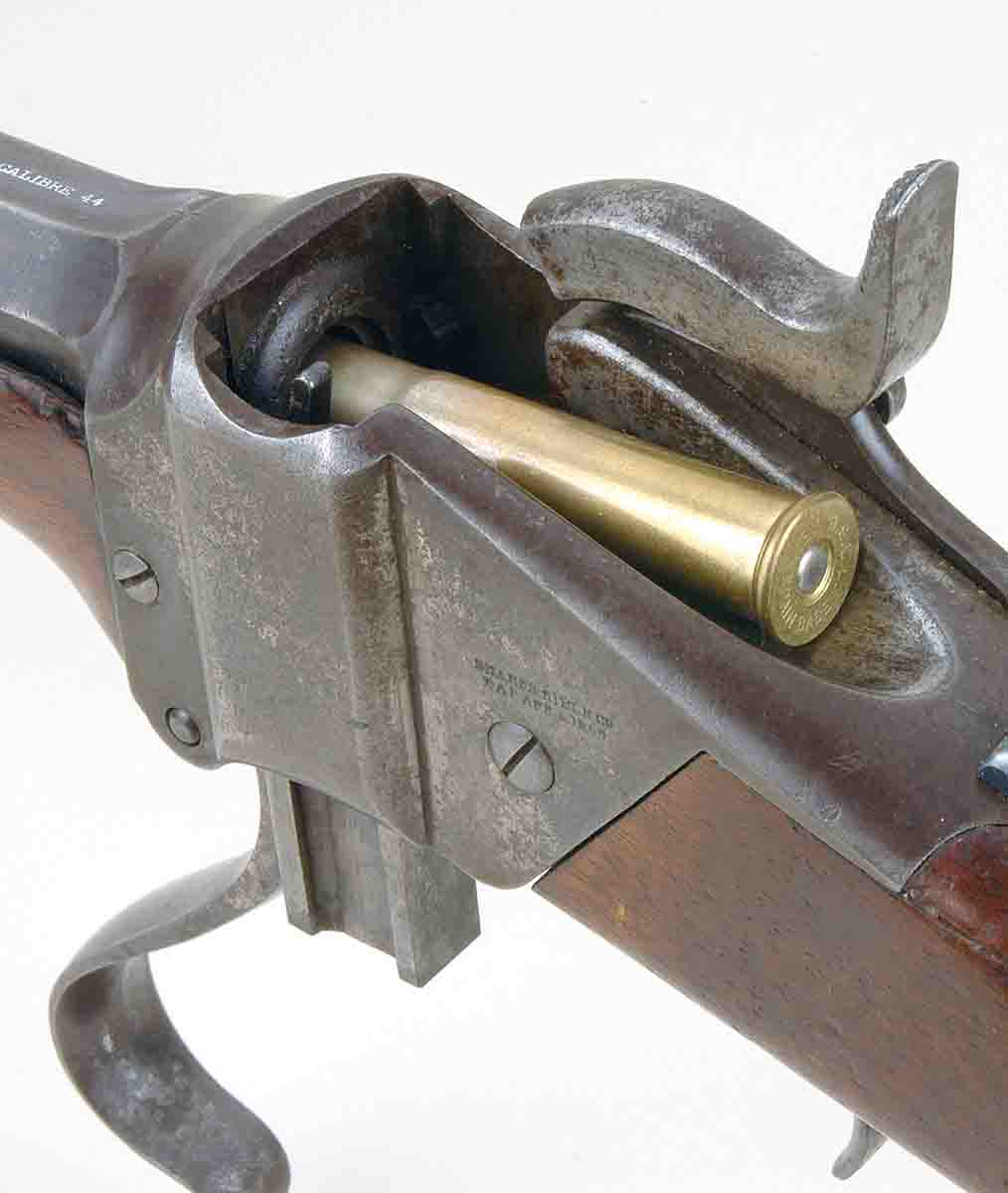
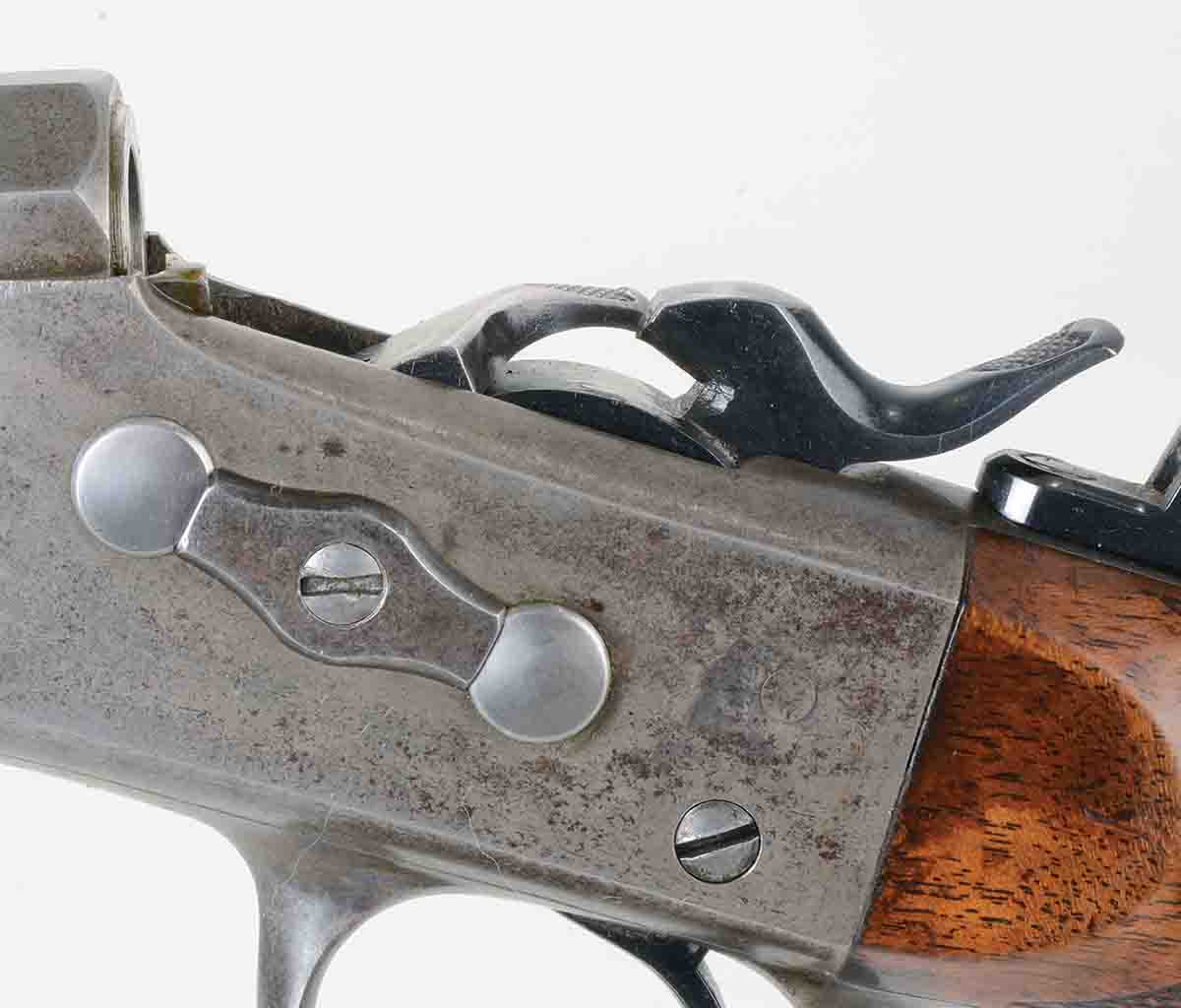
After a round was fired, popping the breechblock up automatically extracted and ejected the spent case – or at least it was supposed to. However, until the 1880s, the government arsenals loaded all .45 Government ammunition in cases made of copper. Copper cases are softer than brass as was used then in most commercial ammunition. This deficiency became noteworthy after the largest fight with Plains Indians, the Battle of the Little Bighorn. It is documented that some of the 7th Cavalry’s carbines heated up to the point that copper cases stuck in chambers. They required prying out by knife point or punched out with a long cleaning rod.
Although the military’s “trapdoor” Model 1873s only came in two basic versions, those Sharps and Remington single shots sold commercially came in a plethora of shapes and sizes.
According to the late Frank Sellers’s book Sharps Firearms, the company offered Sporting Rifles with barrels as short as 211⁄2 inches to as long as 36 inches. Weights ranged from a low of 71⁄2 pounds to a few massive ones at 25 pounds. If there was such a thing as an average Sharps Sporting Rifle, it would have had a 30-inch barrel with a weight of about 9 to 10 pounds, and it would have had double-set triggers. Interestingly, double-set triggers in the 1870s was a $4.00 extra cost option when total rifle cost was only about $30.00, but far more Sharps Sporting rifles had them than with single triggers.
In the same time frame, Remington’s No. 1 rolling block Sporting Rifles came in weights of 81⁄2 to 15 pounds with barrels from 26 to 34 inches. Remington also had a set trigger arrangement but not double set in form. It was a single-set trigger engaged by pushing it forward until clicking. Then trigger pull was a matter of ounces. In 1878 a Remington No. 1 Sporting Rifle with a 26-inch barrel and single (standard) trigger cost $30.00. Adding the set trigger was a $2.50 option, and adding 4 inches of barrel length to make it the same length as an “average” Sharps Model 1874 would have cost $2.00 more.
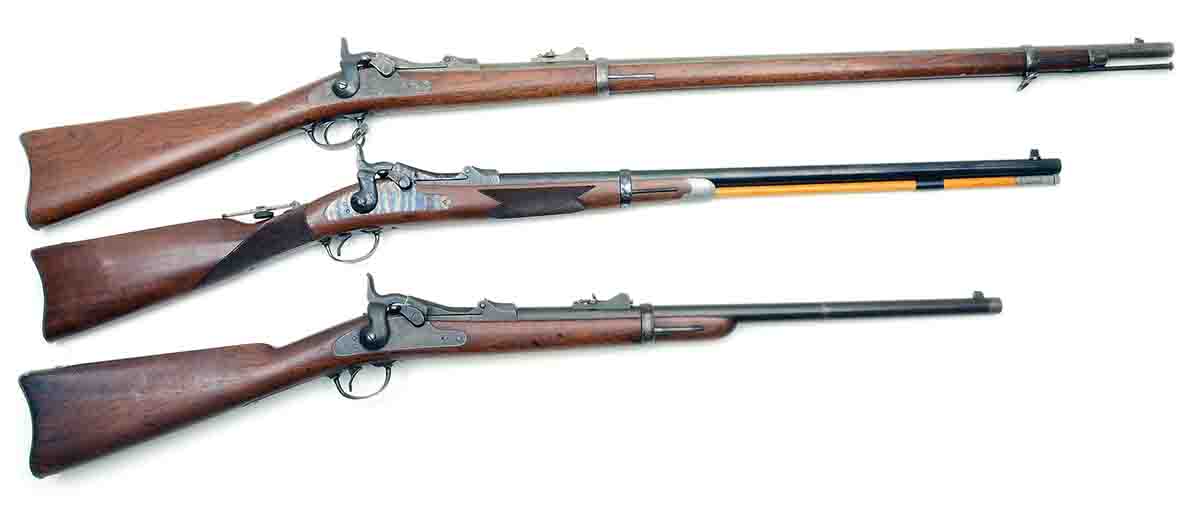
Both Remington and Sharps sold their single shots in military configuration on the civilian market. The Sharps version came with a 30-inch barrel, but some of the Remingtons had barrels as long as 35 inches. These military-style single shots are seen quite often in old photographs of western characters, likely for two reasons. One is that they cost only about half the price of a sporting rifle, and the second reason is that they had sling swivels making them much easier for carrying.
The many calibers and individual cartridges of the 1870’s single shots is a fascinating subject that would require a large volume to cover adequately. Those offered for Sharps are perhaps the easiest to describe. That company made rifles in only four bore sizes: .40, .44, .45 and .50. The .44’s cases were bottlenecked in shape. The .45’s and .50’s cases were straight in shape, and the .40’s were both bottlenecked and straight. Collectively, case lengths for Sharps cartridges ranged from only 15⁄8 inches for one .44 caliber to 27⁄8 inches for a .45 caliber.
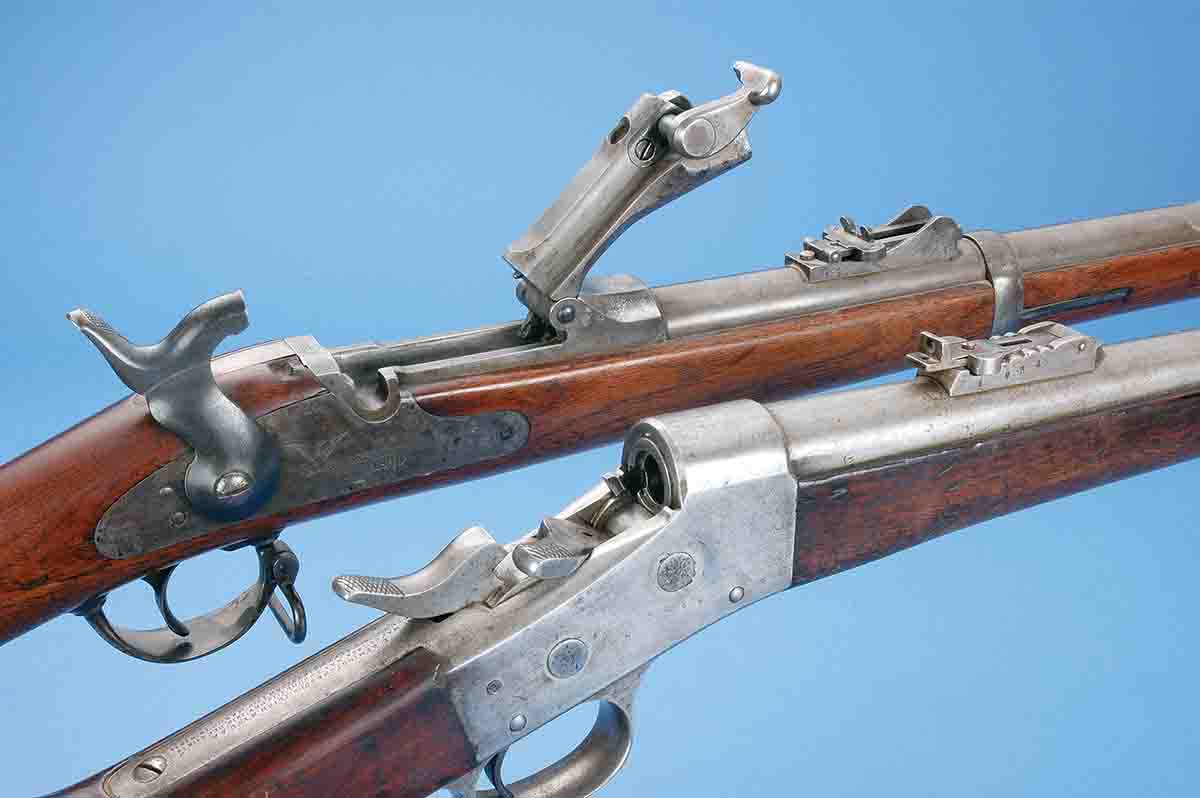
Also unlike many other ammunition manufacturers, the Sharps-manufactured cartridges were not named by a dual set of digits such as Winchester’s .40-82 or .50-110. Sharps rifles were sometimes stamped only as to caliber, such as “.44 Calibre,” and other times the caliber was stamped, such as “.40 Calibre,” along with a cartridge length, such as “21⁄2,” which would have been stamped on the side of a Sharps barrel. Sometimes the case length was even stamped upside down.
Remington’s cartridges were even more confusing, because some were designed by foreign governments and then the company sold rolling blocks so chambered on the American commercial market. Two such were the .43 (11mm) Spanish and the .43 (11mm) Egyptian. One of the most popular Sharps and Remington cartridges was first called the .44-75 and later the .44-77. Its 21⁄4-inch case was exactly the same as the .43 Spanish, but instead of the Spanish round’s .439-inch bullet, the .44’s was .446 inch.
Both companies leaned heavily on the U.S. government for research and development. The .50 Government (aka .50-70) used a 450-grain, .515-inch bullet over 70 grains of black powder in a case 13⁄4 inches long. That one came out as government issue in 1866 and was picked up by Remington and Sharps as soon as their rifles were produced. Then in 1873, the U.S. government adopted the .45 Government with its 2.10-inch case holding 70 grains of powder and a 405-grain bullet – later increased in the 1880s to 500 grains.
Soon after introduction, a special .45 Government carbine load was adopted with 55 grains of powder in an effort to reduce recoil. Again, both companies adopted the .45 Government for their own rifles. In fact, by the time the Sharps Rifle Company stopped rifle production in 1880, it had sold more chambered as .45-21⁄10 than any other.
Other companies, especially J.M. Marlin-made Ballard rifles, had many proprietary cartridges with names like “What Cheer” or “Everlasting.” They are interesting but never achieved the popularity or fame of those chambered by Remington and Sharps.
Starting in 1871, long-range target shooting out to 1,000 yards took off like a rocket, and just as rockets do, it ran out of fuel by the end of the 1870s. In 1877 the Sharps Rifle Company brought out a model especially for such competition, but even by that time the events were losing popularity. The company sold less than 100 of that model.
By the late 1870s, one of the primary purposes for the existence of big-bore, single-shot rifles was disappearing – the bison. So it can be logically said that big single shots put themselves out of business. In 1878 the Sharps Rifle Company introduced a hammerless single shot designed by Hugo Borchardt. It did not catch the gun-buying public’s collective imagination. In fact, some noteworthy western dealers wrote the Sharps Rifle Company saying, “Send us no more of the hammerless model.”
Remington continued with the No. 1 until about 1890. Along the way a No. 11⁄2 was offered. It was essentially a No. 1 scaled down slightly and chambered for smaller rounds, such as .44-40. A No. 2 was made for .22 rimfires; the No. 3 was the so-called Hepburn, but it appeared right at the end of the 1870s.
Of the three most popular single shots in the 1870s, the government’s “trapdoor” outlasted both Sharps’s and Remington’s. It was constantly being upgraded with informal “models” such as the Model 1877 Carbine or Model 1879 Rifle, but all “trapdoors” were stamped Model 1873 or Model 1884. Production of the latter stopped circa 1892, but it is a fact that some U.S. volunteer units still fought with them in Cuba during the Spanish/American War of 1898.
By that time, repeating rifles and their cartridges had been perfected, and except for some die-hard hunters and specialized target shooters, the era of big-bore single shots was over.

